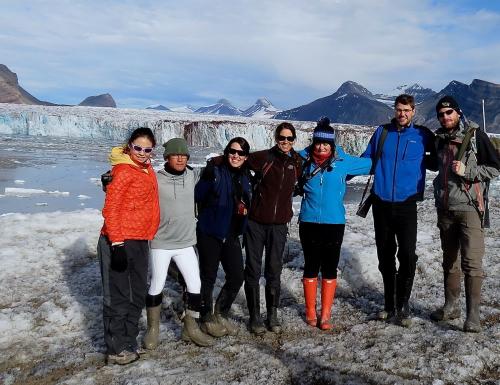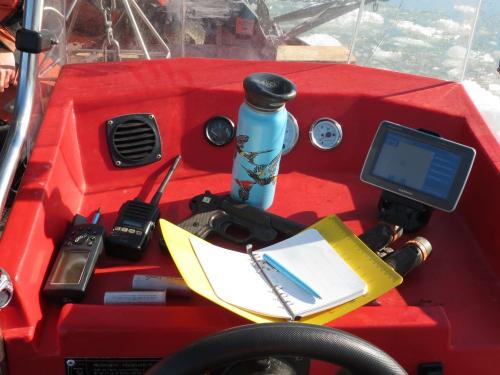Svalbard REU 2014, High Arctic Change
I'm looking forward to sharing this wonderful group of scientists and our research with you tomorrow. Can't wait!
 Join us tomorrow to meet all of the REU Svalbard students!
Join us tomorrow to meet all of the REU Svalbard students!
Teaser
It's been a long day out in the boats on the fjord. Here is something to pique your interest for tomorrow. It is a picture of what I would call my "work station " on the boat.
 My workstation on the boat
My workstation on the boat
From left to right:
Hand held GPS unit to find waypoints for instrument placement
Hand held radio to communicate with our two other boats
Flares
Flare gun (to scare off polar bears)
Waterproof notebook for recording GPS coordinates, time and depth of instrument placement and measurements
Water bottle
Binoculars
Boat GPS unit to mark lat/long of measurements
In the bow of the boat you can see our instruments and winch. Off the bow you can see lots of ice!
Until tomorrow!


Comments